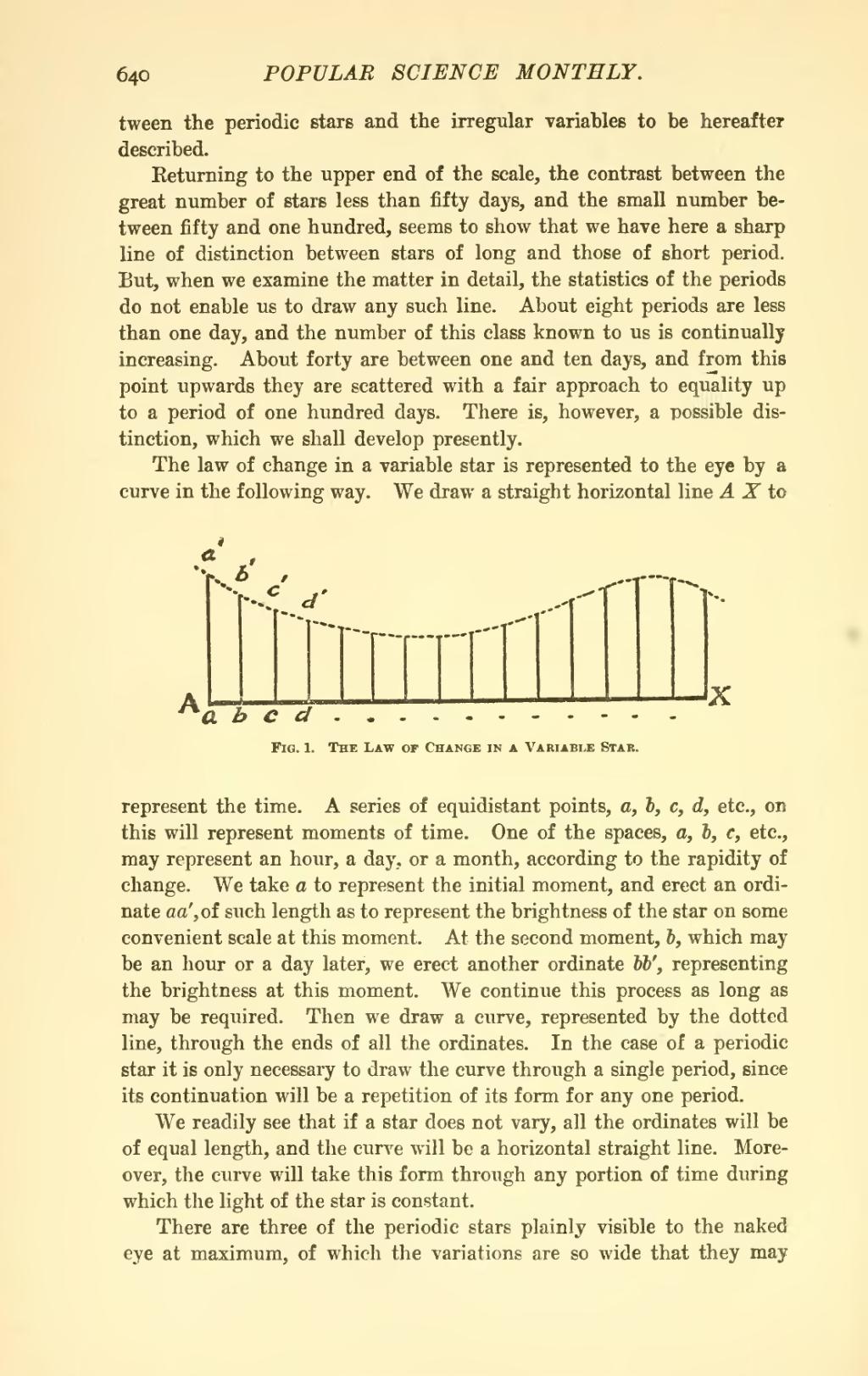tween the periodic stars and the irregular variables to be hereafter described.
Returning to the upper end of the scale, the contrast between the great number of stars less than fifty days, and the small number between fifty and one hundred, seems to show that we have here a sharp line of distinction between stars of long and those of short period. But, when we examine the matter in detail, the statistics of the periods do not enable us to draw any such line. About eight periods are less than one day, and the number of this class known to us is continually increasing. About forty are between one and ten days, and from this point upwards they are scattered with a fair approach to equality up to a period of one hundred days. There is, however, a possible distinction, which we shall develop presently.
The law of change in a variable star is represented to the eye by a curve in the following way. We draw a straight horizontal line A X to

Fig. 1. The Law of Change in a Variable Star.
represent the time. A series of equidistant points, a, b, c, d, etc., on this will represent moments of time. One of the spaces, a, b, c, etc., may represent an hour, a day, or a month, according to the rapidity of change. We take a to represent the initial moment, and erect an ordinate aa', of such length as to represent the brightness of the star on some convenient scale at this moment. At the second moment, b, which may be an hour or a day later, we erect another ordinate bb’, representing the brightness at this moment. We continue this process as long as may be required. Then we draw a curve, represented by the dotted line, through the ends of all the ordinates. In the case of a periodic star it is only necessary to draw the curve through a single period, since its continuation will be a repetition of its form for any one period.
We readily see that if a star does not vary, all the ordinates will be of equal length, and the curve will be a horizontal straight line. Moreover, the curve will take this form through any portion of time during which the light of the star is constant.
There are three of the periodic stars plainly visible to the naked eye at maximum, of which the variations are so wide that they may
